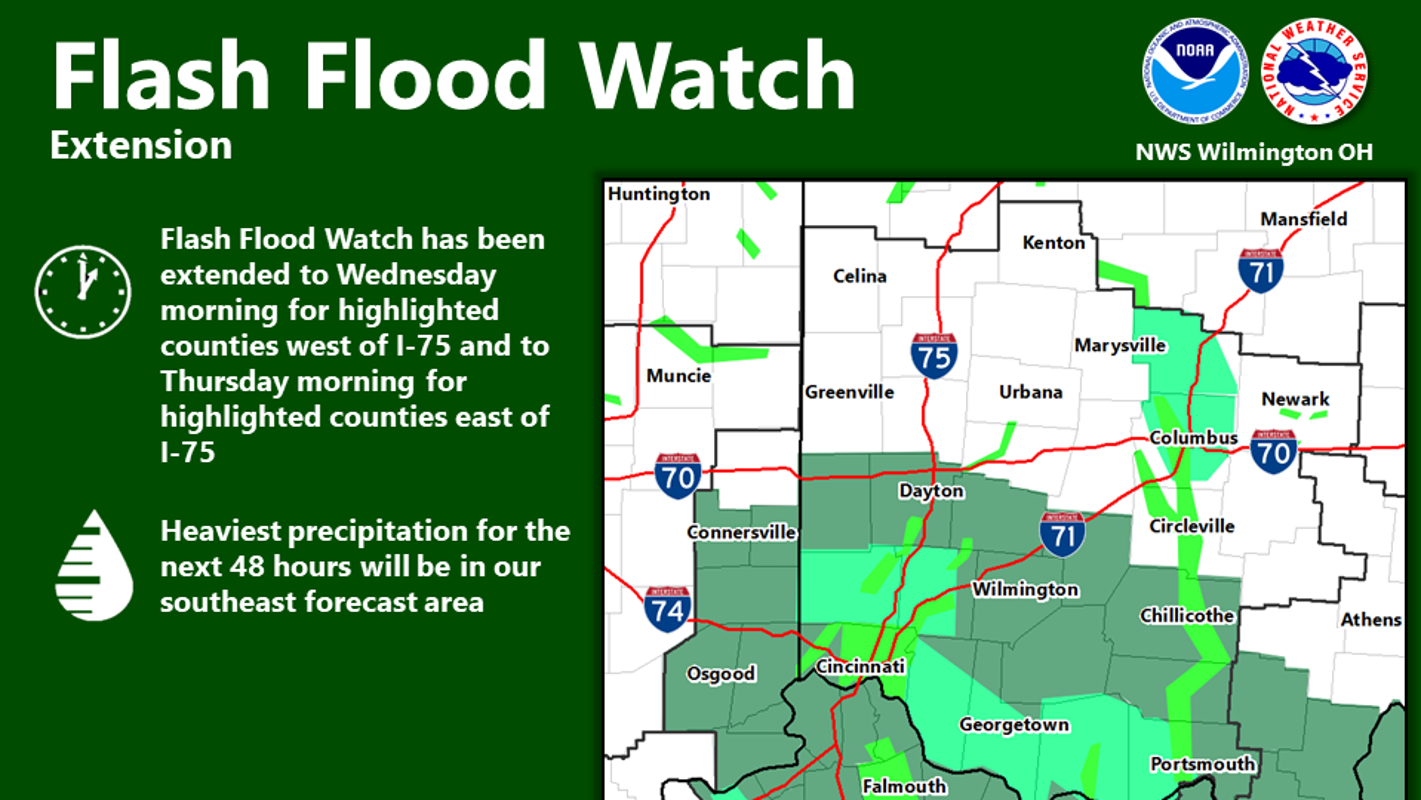Current Flood Warning: Safety Guidelines From The National Weather Service

Understanding Flood Warnings and Advisories from the NWS
Understanding the different types of flood alerts issued by the NWS is crucial for effective preparedness. The NWS uses a tiered system to communicate the severity of flood threats:
- Flood Watch: This indicates that flooding is possible. Conditions are favorable for flooding, and you should monitor the situation closely. Be prepared to take action if a warning is issued. This is a good time to review your flood preparedness plan.
- Flood Advisory: This means that flooding is occurring or is imminent. While not as severe as a warning, it still requires attention and preparedness. Take precautions to protect your property and be aware of potential hazards. Consider this a "heads-up" before more serious conditions develop.
- Flash Flood Warning: This is a life-threatening situation. A flash flood is occurring now in your area. Take immediate action to protect your life and property. Immediate evacuation may be necessary. This is the most serious flood alert. Severe weather alerts involving heavy rainfall often precede flash flood warnings.
The NWS uses a combination of methods to issue these warnings, including:
- Radar data: Tracking precipitation and its intensity to predict areas at risk of flooding.
- River gauges: Monitoring river levels to determine the potential for riverine flooding.
- Rainfall reports: Gathering data from various sources to assess the extent and severity of rainfall.
How to receive NWS alerts:
- NOAA Weather Radio: A dedicated radio receiver that provides continuous weather information, including alerts.
- Smartphone apps: Numerous weather apps provide real-time alerts, often with location-specific warnings.
- NWS website: The official website (weather.gov) offers detailed forecasts, warnings, and safety information.
Understanding the specific terminology used in NWS warnings, such as “imminent threat” or “life-threatening situation,” is critical for taking appropriate action. Heeding these warnings immediately is paramount to ensuring your safety.
Emergency Preparedness: Before the Flood Warning
Proactive flood preparedness is key to minimizing risk and ensuring safety. A well-defined flood preparedness plan should be in place before a flood warning is ever issued. This includes:
- Creating a family communication plan: Establish a designated meeting place and contact information for family members in case of separation.
- Developing an evacuation route: Identify multiple escape routes from your home and know where you'll go if you need to evacuate.
- Preparing an emergency supply kit: This should include at least a three-day supply of food, water, medications, important documents, first-aid supplies, flashlights, batteries, and blankets.
- Protecting your property: Elevate valuable items, secure outdoor furniture and equipment, and consider installing flood barriers or water-resistant materials.
Actions to Take During a Current Flood Warning
When a current flood warning is issued, swift and decisive action is critical. Your priority is protecting your life and the lives of your loved ones.
- Evacuate immediately: If instructed by authorities, evacuate your home immediately. Do not delay.
- Never drive or walk through flooded areas: Floodwaters can be deceptively deep and swift, and even shallow water can hide dangerous debris and hazards.
- Move valuables to higher floors or safe locations: If evacuation isn't possible, move important possessions to upper floors or other safe, elevated areas.
- Turn off utilities (gas, electricity): If instructed by authorities or if water is approaching your home, turn off gas and electricity to prevent further hazards.
- Monitor the NWS for updates: Stay informed about the evolving situation by checking the NWS website or your preferred weather source.
Post-Flood Safety Measures
After the floodwaters recede, significant hazards remain. Flood cleanup and safe return to your property require careful planning and precaution.
- Avoid floodwaters: Floodwaters are often contaminated with sewage, chemicals, and debris. Avoid contact with floodwater at all costs.
- Use caution when entering a flooded building: Structural damage may have occurred, making the building unsafe. Have it inspected by a professional before re-entering.
- Contact your insurance company: Report any damage to your insurer as soon as possible to start the claims process.
- Follow guidelines for safe cleanup and flood damage repair: Dispose of contaminated materials properly and use appropriate safety equipment.
- Report damages to local authorities: This helps assess the overall damage and facilitates relief efforts.
Staying Safe During a Current Flood Warning
Heeding NWS flood warnings and advisories is critical for protecting lives and property. This article has outlined key safety measures for before, during, and after a flood event. Preparedness and swift action are paramount in surviving a flood. Remember, a few proactive steps can make a world of difference. Stay informed about current flood warnings and protect yourself and your loved ones by following the guidelines provided by the National Weather Service. Visit the NWS website for up-to-date information and resources on flood safety.

 Lutte Contre L Iptv Rtbf Et Rtl Belgium Unissent Leurs Forces
Lutte Contre L Iptv Rtbf Et Rtl Belgium Unissent Leurs Forces
 Kontrowersje Wokol Prokuratorow Blamaz W Polsce24
Kontrowersje Wokol Prokuratorow Blamaz W Polsce24
 Queen Wen Courts Paris A Renewed Diplomatic Visit
Queen Wen Courts Paris A Renewed Diplomatic Visit
 A Canada Post Strike Assessing The Risk To Customer Retention
A Canada Post Strike Assessing The Risk To Customer Retention
 Kidnapped Idf Soldier Matan Angrest Image Shows Extent Of Wounds
Kidnapped Idf Soldier Matan Angrest Image Shows Extent Of Wounds
